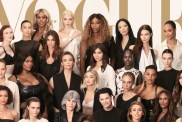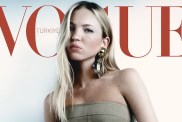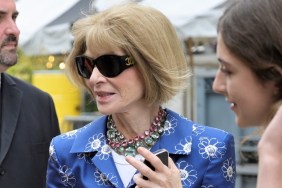— Nika Mavrody

Organic by John Patrick Spring 2014 / Image: Getty
theFashionSpot: What first got you thinking about how sustainability is/should be taught at fashion schools?
John Patrick: I have thought about it for many years because it always seemed like there was never a clear grasp of how it worked when it was actually applied to the fashion industry outside of schools. It is nice to see that it has started to attract more students to it and become less of a niche interest.
tFS: Do you think fashion schools have a responsibility to teach students sustainable approaches?
JP: Of course—students should be prepared for the real world and all of its challenges. It is important to be flexible in order to make great, constructive changes within our industry and understanding how to work within limits.
tFS: Tell me a little bit about your reaction to the questionnaire responses we received from schools. Did anything surprise you or stand out to you? Did you notice any common elements? What are the fashion programs doing well, in terms of sustainability? Where is there still room for improvement?
JP: I am thrilled to see the responses—I am really impressed with the approaches taken by Parsons, San Francisco Academy of Art University, ESMOD Berlin and London College of Fashion. I think that a more holistic, environmentally-based END OF PEAK OIL dialogue could have a great impact on students, across the board. I also personally think that ethics should be first and foremost taught hand-in-hand with design; students should be taught design and ethics simultaneously, and a great resource as a syllabus is the William McDonough St. John The Divine sermon from 1993.

John Patrick Organic Fall 2014 / Image: Getty
tFS: Could you list five books, articles, poems, movies, paintings, songs — whatever — that you think every fashion student should engage with:
- Cotton and Race in the Making of America: The Human Costs of Economic Power by Gene Dattel
- Gertrude Jekyll, a British horticulturist, garden designer, artist, and writer
- Louis Kahn, an American architect; they must see the film his son Nathaniel Kahn made about him called My Architect: A Son’s Journey
- Frederic Edwin Church’s painting, Niagara
- Pauline de Rothschild, a writer and fashion designer; a must-read by her is The Irrational Journey
skip to…
Central Saint Martins | ESMOD Berlin | Kent State | London College of Fashion
Parsons | Pratt | San Francisco Academy of Art University




